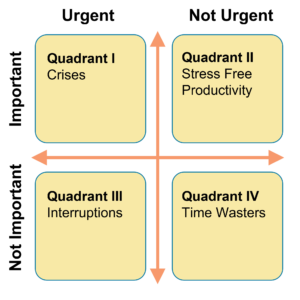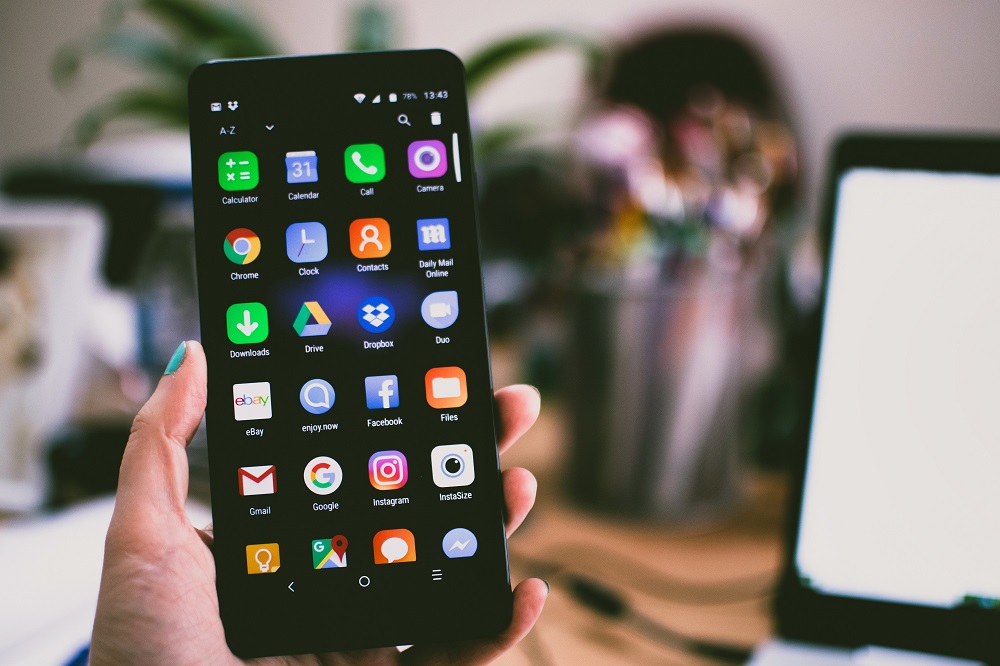Reframing Productivity: Why Eating the Frog Isn’t Always Necessary
Productivity is a concept that is highly valued in modern society. We are encouraged to be efficient, to complete tasks quickly, and prioritize our work. One popular strategy for achieving productivity is known as “eating the frog.”
This metaphor suggests that we should tackle our most difficult or unpleasant task first thing in the morning, thereby freeing up mental energy for the rest of the day. However, while this strategy can be effective, it is not always the best approach.
While it is true that completing a difficult task first can create a sense of accomplishment and help us feel more in control of our day, the strategy may turn out counterproductive in most situations. In this article, we will explore how we can achieve our goals without always having to “eat the frog.”
- How about if it was a turkey to be carved? – This is a more common scenario! You might sense that a task is unpleasant simply because of its enormity or lack of clarity about it. The right strategy here will be to break down the larger tasks into smaller, more manageable steps. This can help you avoid feeling overwhelmed and can make it easier to track your progress over time.
However, it might be easier said than done. This is where a mind-mapping tool will be of help. A mind map is like a spider web, with the main task in the center and all the subtasks branching out from there hierarchically.
- How about the fish fingers? – You have too many easy-to-do tasks on a particular day – These tasks are not the proverbial frogs but are more of tasty fish fingers! Now, the “Eat the Frog” strategy would prevent you from taking up those small and easy tasks. But, as you start work on the complex “frog” task, your mind would frequently run back to those numerous small open tasks that you are not doing. You will end up losing focus on the task at hand and accomplishing nothing.
The most prudent thing to do in such situations will be to first focus on the smaller easy-to-do tasks and slash down your to-do list. This strategy will also help you build up confidence and momentum before tackling the more challenging work.
In conclusion, while eating the frog can be an effective productivity strategy, it is not always the best approach. Whether we are working in a fast-paced corporate environment or pursuing personal goals, a flexible and adaptable approach can help us stay focused, motivated, and productive.
Subscribe to my newsletter, to get tips like this and more, directly in your inbox!
The Catch-All Drawer: A Handy Tool for Staying Organized
Movie soundtracks have been incredibly popular in India, with a large majority of people enjoying this type of music. Several years ago, while visiting a friend’s house, I noticed their audio cassette player and a stack of cassettes beside it. My friend encouraged me to listen to some music, so I began to search through the cassette covers, hoping to find something of interest. Unfortunately, I quickly discovered that the cassettes inside the covers did not match their labels, creating a frustrating and confusing experience. Despite my best efforts, I was unable to find the right cassette and had to abandon the idea of listening to music. The incident left a lasting impression on me, as I had never seen such disorganization before.
Properly storing a cassette in its corresponding cover is perhaps the most straightforward example of being organized. In fact, my experience of being unable to listen to the music due to mismatched cassettes and covers highlights the importance of organization in even the simplest of tasks.
Many people believe that being organized and being productive are two separate concepts, but in reality, they are closely interconnected. The key factor linking these two ideas is the simple notion that knowing where to find the necessary tools and materials can make a significant difference in one’s ability to complete a task. Having everything in its proper place not only provides motivation to begin a project but also saves valuable time that would otherwise be spent searching for misplaced items. In essence, organization is a key component of productivity.
The way to personal productivity is by being organized with your work material. Being organized about your work materials is as simple as planning a proper place for the things you use and then ensuring that the things always go back to those designated places. But, this is easier said than done.
At some moment it is quite possible that you are in hurry, or you are simply lazy, or you do not remember the right designated place for a thing. And when you are stuck like this, there is a big risk that you would misplace your things, which would lead to a messy workplace. This is when having a “catch-all” drawer comes in handy.
Rather than leaving things in a haphazard location, items can be placed in the catch-all drawer until there is time to properly return them to their designated places. Even those who are highly organized may find themselves in situations where they need a temporary holding place for items.
Just as it is important to stay organized with physical items, it is equally important to maintain organization with digital artifacts. Digital documents and files should be stored in designated folders on your computer or in the cloud. When new digital documents are received or created, they should be immediately placed in the appropriate folder.
However, there may be times when we are in a rush or feeling unmotivated, and we might place digital documents in the wrong folder or fail to organize them all together. To avoid a cluttered digital workspace, it is recommended to designate a catch-all folder on your storage as a temporary holding place for unorganized files. Drop these files in this folder whenever you are not able to organize them immediately. Set aside time, perhaps on a weekly basis, to visit this catch-all folder and properly organize its contents into their designated folders. This allows for some laziness while still maintaining organization and preventing clutter in your digital workspace.
Since it is easy to forget about the catch-all folder, it is important to make a habit of regularly emptying it. One effective way to ensure this is to create a recurring task in your to-do list, reminding you to organize and empty the catch-all folder or drawer. This way, you will stay on top of keeping your workspace organized and avoid clutter from building up. By making organization a regular habit, you will be able to work more efficiently and reduce stress levels that come with disorganization.
Subscribe to my newsletter, to get tips like this and more, directly in your inbox!
(Originally published in Times of India on April 01, 2023)
Mastering Time Management: A Guide to Evaluating Methodologies and Choosing the Best Fit for You
How maturely do you manage your time at a personal level? There is no wonder that you are startled by this question. We never think about time management from this perspective, but it pays to do so. Let’s borrow a perspective from the process maturity model, CMM.
CMM (Capability Maturity Model) was developed by Software Engineering Institute (SEI) at Carnegie Mellon University for software development companies. Eventually, CMM has grown to CMMI and is applied to other industries too.
CMMI provides a growth path for the maturity of an organization’s processes through five levels. The first level is where everyone starts. At this level, called the initial level, the processes are ad hoc, and unstructured. Success is unpredictable and depends on individual heroics. At the fifth level, called the optimizing level, however, the processes are standardized, repeatable, and efficient. Not just that, but the processes are set up for continuous improvement.
The same goes for personal time management. It’s not that one could not succeed without a formal time management method, but then the success is left to chance or heroics. Once you adopt an appropriate time management method, you move from the initial level to the optimizing level, where success is guaranteed and repeatable.
Once we accept that we need a formal time management method, we open a kind of pandora’s box. There are many methods with their proponents vouching for their greatness!
This is where we could take help from Stephan Covey’s concept of generations of time management alluded to in his legendary book, The 7 Habits of Highly Effective People.
His idea is that there has been continuous improvement in the way we manage our time, intending to get greater control of our lives. He divides the evolution into four generations, each generation building on the earlier.
The first generation of time management was about collecting and documenting the work items or steps of working. If your time management method is limited to plain checklists and To-do lists, it’s the first-generation method.
The second generation of time management is characterized by the adoption of calendars and appointment books. It solved the problem of taking control of activities that are time-sensitive.
The third generation of time management involves task prioritization, goal setting, and daily planning. Such methods intend to set clear boundaries for your work and time slots. The third-generation methods made the time management process so rigid that there was no scope for spontaneity. That is where the demand for the current or fourth generation sprung up.
The fourth generation time management is something that builds on all the previous generations’ ideas but offers a resilient approach to handling the distractions and spontaneity to choose the right work suiting the duration of a given time slot and your energy level at that hour. This makes the whole process practically applicable and raises the quality of the outputs.
You will not go wrong if you choose a method from the earlier generations, but you could maximize the benefit only if you choose a method from the fourth generation. The Getting Things Done (GTD) method is the perfect fourth-generation time management method. You will find several resources to learn and adopt GTD and you will leapfrog to the latest solution to the problem of time management.
Subscribe to my newsletter, to get tips like this and more, directly in your inbox!
(Originally published in Times of India on March 18, 2023)
ChatGPT and Wordle: A Productivity Tip You Need to Try
If you haven’t heard about ChatGPT and Wordle, you were traveling back to earth from Mars (I mean you would have heard about them even while hiding under a rock if you were to be on earth). Well, if it is so, congratulations on becoming the first humans to travel to Mars!
Now, let’s get to the little productivity tip I want to discuss.
Wordle has been an amazingly engrossing word game. It’s been a daily ritual for several puzzle-loving people who know English. Of course, there are French & Spanish language versions of Wordle too. Wordle’s wild popularity could be measured simply by the infinite number of offshoots and variations that have come up – Quordle, Octordle, Sedecordle and Squareword, Waffle, Globle and Worldle, Hello Wordl, just to name a few!
ChatGPT could be many things to many people but for the most, it’s a new workhorse helping in drafting tasks and finding quick, reliable (reasonably), and detailed answers to curious questions, in a chat mode. It has cut down the time one might spend on Google searches, although as of writing Google search is indispensable.
You might still be wondering, what’s common between Wordle and ChatGPT, beyond that they are the recent clickbaits – ahem! I am coming there! As of writing both are web-based apps and there are no mobile versions. Not having them on your smartphones hampers their frequent usage. It’s not just these, there are many such Apps that do not have their counterparts on smartphones. Of course, you could open your favorite browser App on your mobile and visit those sites using the URLs, but that’s laborious. One idea is to bookmark those sites in the browser but still, you require a few clicks.
Here comes a great facility offered by your smartphone operating system, be it Android or iOS – creating a shortcut to a website on the home screen. Once you have such a shortcut, it’s just one tap and you are on the required web page.
Adding a website URL as a shortcut on your mobile device varies depending on the operating system.
For iOS (iPhone or iPad):
- Open Safari and go to the website you want to create a shortcut for.
- Tap the share icon at the bottom of the screen (the square with an upward arrow).
- Scroll down and tap on “Add to Home Screen”.
- Type in a name for the shortcut, then tap “Add” in the upper right corner of the screen.
For Android:
- Open Google Chrome and go to the website you want to create a shortcut for.
- Tap the three-dot menu in the upper right corner of the screen.
- Tap “Add to Home Screen”.
- Type in a name for the shortcut, then tap “Add” in the lower right corner of the screen.
It’s not about saving a little time, but having such shortcuts, encourages you to visit those sites at every opportunity. You may also like to read my post on organizing your mobile home screen.
(Originally published in Times of India on February 25, 2023)
(Subscribe to my newsletter, to get tips like this and more, directly in your inbox!)
From Idea to Action: Are You Implementing Your Good Ideas or Leaving Them Behind?
“Hey, Listen!”, my daughter said, while peeling an orange, “I was surprised the other day when my friends could not relate to when I said that I eat fruits every day”.
We were all amused at the dining table. Indeed, we have been infinitely consistent with eating dry fruits and fresh fruits, every morning! While chatting further we concluded that the credit went to my wife who has been meticulous in getting the right portions cleaned and set on the dining table for all of us. It was not enough to keep the refrigerator well stocked.
In a gathering, you ask people to raise their hands if they believe in the value of fruits in their diet. I am sure most will raise their hands. But if you ask, next, how many of them were able to consume fruits every day, probably many hands will go down.
I think this is what happens with all the good things. It’s not enough to know that they are suitable for our well-being. We need a set of rituals or a system that makes us apply them in life at the right time and place.
A case in point is that there are several personal productivity ideas that are being told for several generations, but we miss applying them simply because we lack a foolproof system where these ideas are tightly built-in.
Look at these:
- Plan for the day in the morning.
- Plan Your Week’s Schedule, ahead!
- Block out your calendar.
- Be well prepared for the meetings.
- Have some thinking/brainstorming time.
- Obtain clarity!
- Eat the frog!
- Delegate your work and manage delegated tasks.
- Be organized with your work.
- Focus on only a few goals at a time.
- Don’t lose sight of long-term goals.
- Set Aside Time for Breaks.
- Write your journal every day.
- Start early and go slowly.
- Don’t multitask.
- Ensure quality in the outputs.
- Deliver outputs on time.
- Stay consistent in all that you do.
- Set priorities.
- Utilize peak-productivity hours for important tasks.
- Learn from successes as well as mistakes.
- Manage your energy (not just time).
- Get better at saying “no”.
- Plan before you act.
- Don’t just plan, you should act too.
You will agree with every one of them. But, if I ask if you have a foolproof system that builds all these together to keep you productive and stress-free, I am sure, most of you will even be surprised if such a system could even exist. The GTD (Getting Things Done) methodology precisely offers you this.
Be it, your health, your diet, productivity habits, or anything else. It’s not enough to know what’s good for you. You will have a chance to succeed with them, only if you build them into rituals or a system.
(Originally published in the Times of India on February 12, 2023)
Photo by Mark McCammon: https://www.pexels.com/photo/black-kettle-beside-condiment-shakers-and-green-fruits-and-plants-on-tray-on-brown-wooden-table-1080696/
Subscribe to my newsletter, to get tips like this and more, directly in your inbox!
What They Don’t Teach you about Eisenhower Matrix
The Eisenhower Matrix is an incredibly popular topic on LinkedIn, as evidenced by the numerous search results it generates. Check this 99th page of the search results on LinkedIn, if you don’t believe it.
However, many people still view it with awe, without fully realizing its potential. Before delving into the lessons to be learned from the matrix, let’s briefly recap its structure:
Similar to other matrices, the Eisenhower Matrix consists of two axes that represent distinct task characteristics: Urgency and Importance. The vertical axis comprises two values, Important and Not Important, while the horizontal axis encompasses Urgent and Not Urgent. These combinations result in four quadrants:

Quadrant I: Important and urgent tasks, like, crises management
Quadrant II: Important, but not urgent tasks, like preventive measures
Quadrant III: Urgent, but not important tasks, like interruptions
Quadrant IV: The tasks that are neither urgent nor important, like entertainment
In my experience, I have encountered individuals who struggle to grasp the concept that certain tasks can be important without being urgent. Unfortunately, our work environment has fostered a mindset where we tend to equate importance with urgency!







